By Girija Madhavan
An oil-painting of a pastoral scene in green and gold, catches a ray of the morning sun where it hangs on a wall in our home. The workers in the field seem to come alive, the foliage moves in the morning breeze in contrast to the static hay ricks in the background. The painting is by a Mysore artist, M.S. Chandrasekhar [1924-2007]. It was signed, dated and gifted to me in 1952 and remains a cherished possession.
Born and educated in Mysore, he studied art at the Chamarajendra Technical Institute, now renamed the Chamarajendra Academy of Visual Arts (CAVA). He painted in oils, water colour, and ink, used pencil and other media as well. Stocky, with a thick shock of hair, strong eyebrows and a high-bridged nose, he was a striking personality.
I first met him in 1949 at the age of eleven. I was being home-schooled. My mother, Mukta Venkatesh, herself a painter of flowers in water colours, knew many artists in Mysore. She managed to persuade artist Chandrasekhar to come three times a week to teach me the basics of drawing to fill my days which had no school routine. I looked forward to those lessons as he thought up new and exciting projects for me. Sometimes he would bring models of cubes and geometric shapes on the carrier of his bicycle for me to draw and learn perspective. Copying designs and drawings accurately was followed by depicting objects as still-life. First I learnt to do pencil shading and then graduated to colour and painting with Indian ink. These lessons in ink painting have enriched me for decades. I continued to learn it from a Japanese artist in later times, after the initial introduction to this medium in my childhood. My Japanese teacher stressed a routine to focus the mind on representing the spirit of the subject to be painted, a Zen exercise. She wanted the monochrome hues of ink to “flow from the brush and pulse with life.”

Shri Chandrasekhar also liked to start each lesson with a disciplined routine; sketch books and paper put out, pencils mended with a razor blade and the leads ground to a fine point, erasers to be cleaned. Ink sticks [bought from R. Krishnaswamy, the stationers on Sayyaji Rao Road in Mysore city] were ground to a thick, viscous liquid. This was followed by diluting the black ink in gradation of shade from jet black to palest grey in small containers. The early lessons of finding monochrome equivalents for shades and depths of colour were fascinating.
Chandrasekhar and a group of artist friends, would ride to scenic places, painting tackle and lunchboxes packed on their bicycles, to paint on the spot. While the others brought spicy, cooked food to eat, artist Rumale Channabasavappa, a Gandhian, who was way ahead of his times, ate salads and raw dishes. His soft water colours of flowers and landscapes are memorable. Fine artists, M.S. Krishnaswamy and N.S. Subbukrishna, were also part of this group.
Chandrasekhar left Mysore. He received awards for his work. The project that he enjoyed was being commissioned by the Archaeological Survey of India to copy and document the murals in the Ajanta Caves. The corridor of Parliament House is decorated with large panels by renowned artists. M.S. Chandrasekhar’s painting is on Panel 47.
In those days, several artists visited our Yadavagiri home with their paintings.
M.J. Shuddodhana [Mysore Jagadeesan Shuddodhana] remained a dear friend till his death in 2002, a year before my mother Mukta passed away. He gifted her an oil painting of a Gulmohar tree on her 100th birthday. He left a deep impression on me of his generosity when I was a young girl. Among the watercolours he was displaying in our drawing room was a river scene of emerald green water, sandbanks, a backdrop of dense foliage and two women with pots. There was so much dappled light and shade in the painting that I exclaimed aloud with pleasure. To my surprise, he presented the picture to me! In the late 1940s, such paintings were sold for about Rs.40.
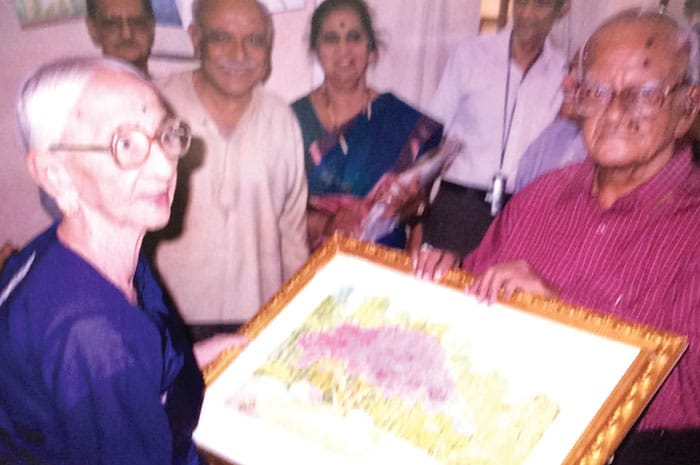
S.N. Swamy, portrait painter and oil-colour artist painted my elder sister on her 18th birthday. He depicted her in a blue-green saree with a rich brocaded border, the flowers in her hair almost tactile in their realism, long, glittering earrings and a pearl necklace. Her expression was serous. A friend who saw the portrait exclaimed that it was “both pensive and expensive.”
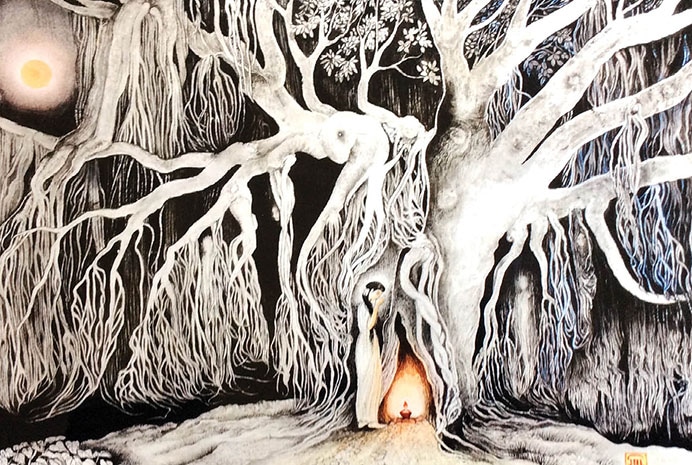
Mysore welcomed musicians, sculptors and artists. Traditional art was represented by the Mysore School of Painting, Ganjifa and other classical genres. Wood inlay was raised from craft to the level of art by local craftsmen. There were talented painters trained in the Western idiom like Chandrasekhar. Some used oils, watercolours, gouache, tempera and other media. Those days were more relaxed and not so competitive as the art world now. Mysore artists like N.S. Harsha, have made a name in the international art world and command high prices for their work. We also salute the artists of old Mysore who brought beauty into our lives, picturing a landscape or sunset, creating a realistic still-life or capturing the spirit or mood of a person in a portrait. Their memories remain with us along with the beauty they depicted.



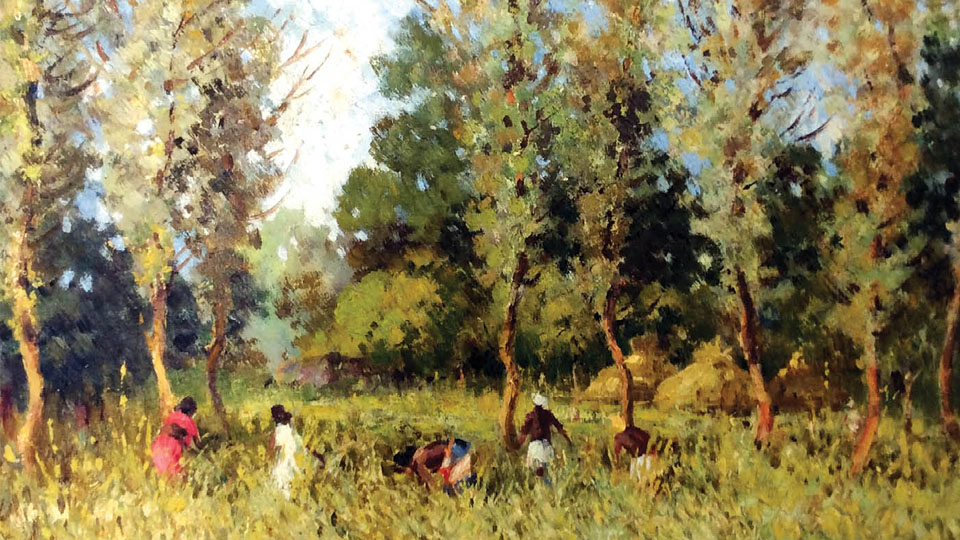
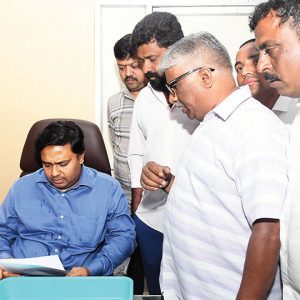
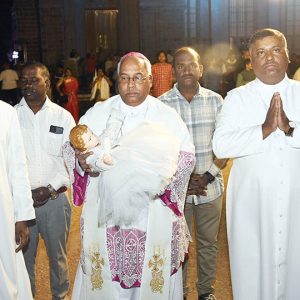
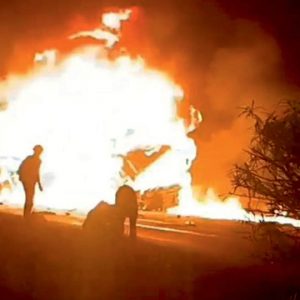
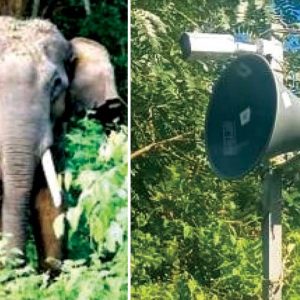
Recent Comments